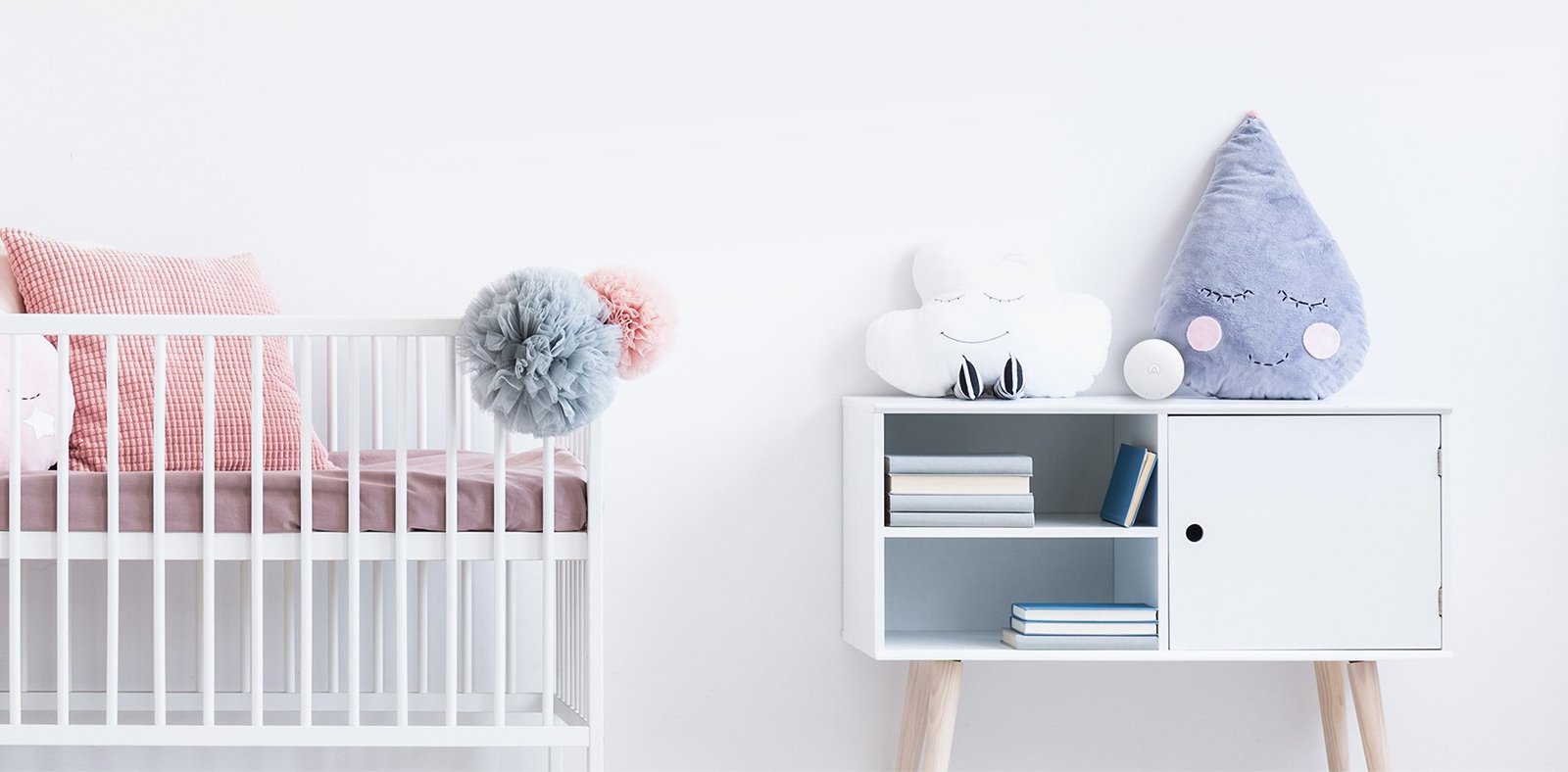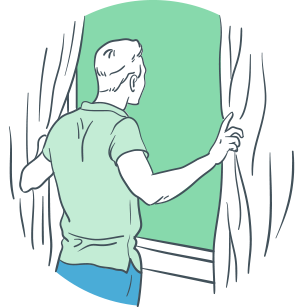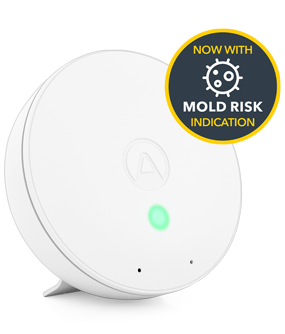
For the most accurate readings, the device should be placed where mould is most likely to grow. The most vulnerable areas are often the coldest and least ventilated.
Good. Little risk for mould growth, but there is always a possibility for mould above 0.
Fair. Mould will grow especially on vulnerable materials such as textiles and wood.
Poor. There is a high mould risk for all kinds of materials.
The mould risk indicator will not detect actual mould spores in the air. However, it will tell you when the conditions in a space are at risk for mould growth. This means it is a great device to use to prevent mould or to proactively watch out for the chance of mould. However, once mould has started growing and is visible, it should always be removed. This can be easily done on your own. If you are unsure if what you are seeing is mould, then use a mould test kit or contact a mould professional.

The mould risk sensor uses an algorithm based on the temperature and humidity sensor to measure how fast mould can grow under the current conditions. Since the material where mould is growing is an important condition to the speed of mould growth, we have assumed the more vulnerable materials in our equation: wood and textiles. Therefore, if your device is showing yellow in an all tile bathroom, there is less chance of mould growth.
We have used the criteria for moisture control in buildings based on ASHRAE standards (a global society advancing human well-being through sustainable technology for all buildings). Their mould index scale is from 0 (no mould) to 6 (full mould growth population) and it takes into account material types to describe the total accumulated mould after a certain time. We base our indicator on the rate change of the mould index: 0 means declining index, while 10 means maximum increase to the index.
Mould growth at home affects the air we breathe triggering asthma, allergies, and illness. Stay ahead of mould growth with Wave Mini, because once you see it, it's too late!
